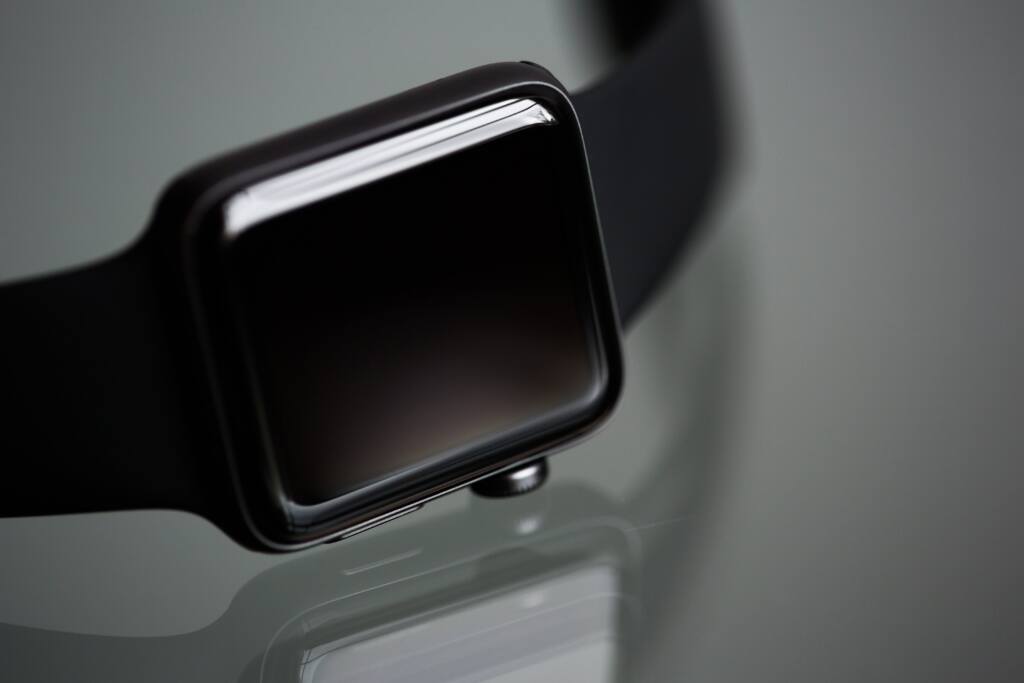“Wearable Technology in Healthcare”

As technology continues to advance, it’s no surprise that the healthcare industry has been at the forefront of implementing new innovations. One such innovation is wearable technology, which has become increasingly popular in recent years. Wearable technology has the potential to revolutionize healthcare, making it more efficient and accessible for patients. In this blog post, we will explore the impact of wearable technology in healthcare and how it is changing the way we approach healthcare. Join us as we delve into the world of wearable technology and its potential to transform the future of healthcare.
What is Wearable Technology?
Wearable technology refers to any device or gadget that can be worn on the body, typically in the form of a smartwatch, fitness tracker, or other innovative accessory. These devices are designed to collect and track data related to the user’s health and well-being, providing valuable insights that can be used to improve healthcare outcomes. With the advancements in technology, wearable devices have become increasingly popular and are now revolutionizing the healthcare industry.
Key Takeaways:
Wearable technology encompasses devices that can be worn on the body to collect and track health-related data.
These devices provide valuable insights that can help improve healthcare outcomes.
Wearable technology is revolutionizing the healthcare industry by transforming patient monitoring and management, enabling remote healthcare services, improving medication adherence, and enhancing preventive care and wellness.
How Wearable Technology is Transforming Healthcare

The impact of wearable technology on healthcare is significant. These devices have the potential to revolutionize the way healthcare is delivered and experienced.
Here are a few key ways in which wearable technology is transforming the healthcare industry:
Patient monitoring and management
Wearable devices allow for continuous monitoring of vital signs and other health parameters, providing real-time data on patient health. This enables healthcare professionals to closely monitor patients, especially those with chronic conditions, and intervene promptly if any issues arise. Wearable devices such as heart rate monitors, blood glucose monitors, and sleep trackers enhance patient management by delivering actionable information to both patients and healthcare providers.
Remote healthcare services
One of the most significant impacts of wearable technology in healthcare is the ability to provide remote healthcare services. With wearable devices, healthcare professionals can remotely monitor patients and provide consultations, eliminating the need for in-person visits. This is especially beneficial for patients in rural areas or those with limited mobility. Telemedicine, powered by wearable technology, has the potential to revolutionize healthcare access and improve patient outcomes.
Improving medication adherence
Wearable devices can also contribute to better medication adherence by sending reminders and alerts to patients. For example, smartwatches can notify patients when it’s time to take their medication, ensuring they stay on track with their treatment plan. This technology can be particularly useful for patients with complex medication regimens or those at risk of forgetting their medications.
Enhancing preventive care and wellness
Wearable technology plays a crucial role in promoting preventive care and wellness. These devices track physical activity, sleep patterns, and other lifestyle factors, allowing individuals to gain insights into their overall health and well-being. By providing personalized recommendations and guidance, wearable devices encourage users to adopt healthier habits and prevent disease. They empower individuals to take control of their health, leading to improved well-being and reduced healthcare costs.
Benefits & Importance of Wearable Technology in Healthcare
The benefits and importance of wearable technology in healthcare are significant.
Here are a few key reasons why the adoption of wearable devices is crucial for the industry:
Improved patient outcomes: By enabling continuous monitoring and remote healthcare services, wearable technology can contribute to better patient outcomes. Early detection of potential health issues, timely interventions, and personalized care based on real-time data can significantly improve patient health and reduce hospital readmissions.
Enhanced patient experience: Wearable devices empower patients by giving them more control over their health. They provide personalized insights, enable self-management, and promote proactive health behavior, leading to a more engaging and satisfying patient experience.
Increased healthcare efficiency: Wearable technology streamlines healthcare processes by automating data collection and analysis. This eliminates the need for manual record-keeping and enables healthcare professionals to make informed decisions quickly. The efficiency gained through wearable technology can help reduce administrative burdens and optimize resource allocation, ultimately improving the overall healthcare system.
Types of Wearable Technology for Healthcare
There are various types of wearable technology devices available for healthcare purposes.
Here are three commonly used categories:
Smartwatches and fitness trackers
These devices are worn on the wrist and track various health parameters, including heart rate, steps taken, calories burned, and sleep patterns. They often come with accompanying mobile applications that provide users with real-time data and insights into their health and fitness levels. Smartwatches and fitness trackers are widely used by individuals to monitor their physical activity and overall well-being.
Remote monitoring devices
Remote monitoring devices are designed to collect and transmit real-time health data to healthcare professionals. These devices can track vital signs, such as blood pressure, heart rate, and blood glucose levels, and send the data wirelessly to the healthcare provider. This allows for continuous monitoring of patients, especially those with chronic diseases, without the need for frequent hospital visits.
Wearable patches and medical sensors
Wearable patches and medical sensors are adhesive devices that can be attached to the skin to monitor specific health metrics. They can track parameters such as temperature, and oxygen levels, or even detect irregular heart rhythms. These devices are particularly useful for continuous monitoring of patients in clinical settings or for collecting data during specific medical procedures.
How does Wearable Technology Work in Healthcare?
Wearable technology devices work by utilizing sensors and other embedded technologies to collect data from the user’s body. These sensors can measure various physiological and environmental parameters, such as heart rate, body temperature, or location. The collected data is then processed, analyzed, and displayed to the user or transmitted to healthcare providers for further analysis.
Different wearable devices utilize different technologies to collect data. For example, heart rate monitors use photoplethysmography to measure blood flow through the skin, while fitness trackers use accelerometers to measure movement and activity levels. Advanced wearable devices may also incorporate artificial intelligence algorithms to provide personalized insights based on the collected data.
The data collected by wearable devices can be stored locally on the device or transmitted wirelessly to cloud-based platforms for further analysis and record-keeping. This data is then accessible to healthcare providers, allowing them to monitor patients remotely and make informed decisions about their care.
Wearable Technology and Healthcare Quality Metrics
The adoption of wearable technology in healthcare has a significant impact on key quality metrics.
Here are three ways in which wearable technology can improve healthcare quality:
Improved patient outcomes
By providing continuous monitoring and timely interventions, wearable technology can help improve patient outcomes. Early detection of health issues, personalized care plans, and remote monitoring capabilities contribute to better management of chronic conditions and overall wellness.
Enhanced patient experience
Wearable technology empowers patients by providing them with real-time information and encouraging proactive participation in their healthcare journey. The ability to track their own health metrics, receive personalized recommendations, and interact with healthcare providers remotely leads to a more engaging and satisfying patient experience.
Increased healthcare efficiency
Wearable technology streamlines healthcare processes by automating data collection, analysis, and communication. This reduces administrative burdens, optimizes resource allocation, and enables healthcare professionals to make more informed decisions efficiently. The increased efficiency benefits both patients and healthcare providers by facilitating better care coordination and resource utilization.
https://7thavewellnessblog.com/?p=3735
How to Implement Wearable Technology in Healthcare
Implementing wearable technology in healthcare requires careful planning and consideration.
Here is a step-by-step guide to successfully implementing wearable technology in a healthcare setting:
1. Identify the specific needs and goals
Before implementing wearable technology, healthcare organizations must identify their specific needs and goals. This involves understanding the requirements of the organization, including the target patient population and the desired outcomes of using wearable devices.
Understand the healthcare organization’s requirements: Organizations should assess their existing workflows, infrastructure, and capabilities to determine how wearable technology can be integrated and leveraged effectively.
Identify the target patient population: Different patient populations have varying needs and preferences. Identifying the target population helps determine the types of wearable devices and functionalities that will be most beneficial.
2. Select the appropriate wearable devices
After identifying the needs and goals, healthcare organizations must research and evaluate the available wearable technology options. Factors to consider include device compatibility, ease of use, reliability, and integration with existing healthcare systems.
Research and evaluate available options: There are a wide variety of wearable devices available in the market. Healthcare organizations should carefully research and evaluate different options to select the devices that best meet their specific requirements.
Consider compatibility and integration with existing systems: Seamless integration with existing electronic health record systems and other healthcare technologies is essential to maximize the benefits of wearable technology. Compatibility and interoperability should be carefully considered during the selection process.
3. Implement and integrate wearable technology
Once the appropriate devices have been selected, healthcare organizations must implement and integrate the wearable technology into their existing workflows and systems. This may involve configuring the devices, installing necessary software, and establishing connections with other healthcare technologies.
4. Train healthcare professionals and educate patients

To ensure a successful implementation, healthcare professionals and patients must be adequately trained and educated on how to use wearable devices effectively.
Ensure healthcare providers are knowledgeable: Healthcare professionals should receive training on how to use and interpret the data collected by wearable devices. This ensures that they can effectively monitor and manage patients using the technology.
Educate patients on using wearable devices effectively: Patients need to understand how to use wearable devices, interpret the data, and take appropriate actions based on the insights provided. Providing clear instructions and educating patients on the benefits of wearable technology is crucial for patient engagement and successful implementation.
5. Establish data management and privacy policies
Data management and privacy are paramount when implementing wearable technology in healthcare. Healthcare organizations must establish robust policies and procedures to ensure data security and compliance with regulations such as HIPAA.
Ensure HIPAA compliance: Healthcare organizations must ensure that the collection, storage, and transmission of patient data through wearable devices comply with HIPAA regulations. This includes implementing appropriate encryption measures and access controls.
Secure data storage and transmission: Wearable technology generates a significant amount of sensitive data. Healthcare organizations must establish secure data storage and transmission mechanisms to protect patient privacy and prevent unauthorized access.
Wearable Technology in Healthcare: Challenges and Considerations
While wearable technology offers numerous benefits, there are also several challenges and considerations that healthcare organizations must address during implementation:
Privacy and security concerns: Wearable devices collect and transmit sensitive health data, raising concerns about privacy and security. Healthcare organizations must implement robust security measures to protect patient information from unauthorized access or breaches.
Data management and interoperability: Integrating wearable technology into existing healthcare systems can pose data management and interoperability challenges. The data collected by wearable devices must be seamlessly integrated into electronic health record systems and other healthcare platforms to enable efficient data analysis and decision-making.
User acceptance and engagement: The successful adoption of wearable technology relies on user acceptance and engagement. Healthcare organizations must address any barriers to adoption, such as device usability, patient education, and concerns about data privacy. Engaging patients and healthcare professionals in the implementation process through education and training programs can help overcome these challenges.
https://www.ncbi.nlm.nih.gov/
Wearable Technology Examples in Healthcare
Numerous success stories and case studies demonstrate the impact of wearable technology in healthcare.
Here are a few examples:
Remote patient monitoring: Wearable devices have enabled healthcare organizations to remotely monitor patients, leading to improved management of chronic diseases such as diabetes and hypertension. Continuous monitoring of vital signs and real-time data analysis have resulted in lower hospital readmission rates and enhanced patient outcomes.
Telemedicine and virtual consultations: Wearable technology has facilitated telemedicine and virtual consultations, allowing healthcare professionals to provide remote consultations and monitor patients from a distance. This has significantly improved access to healthcare, especially for individuals in rural areas or those with limited mobility.
Health and wellness management: Wearable devices have empowered individuals by enabling them to monitor their health and well-being proactively. By tracking activity levels, sleep patterns, and other lifestyle factors, users can make informed decisions about their health and take proactive steps toward wellness.
Future Trends and Innovations in Wearable Technology for Healthcare

The future of wearable technology in healthcare is promising, with continued advancements and innovations on the horizon.
Here are a few trends to watch out for:
Integration with artificial intelligence: The integration of wearable technology with artificial intelligence algorithms holds immense potential for personalized and predictive healthcare. AI-powered wearable devices can analyze complex datasets and provide real-time recommendations based on individual health profiles.
Data interoperability and standardization: As wearable technology becomes more widespread, the need for data interoperability and standardization will become increasingly important. Efforts to establish common standards and seamless integration between wearable devices and healthcare systems will enhance data exchange and improve healthcare quality.
Advancements in sensor technology: Sensor technology will continue to advance, enabling more accurate and reliable data collection. Innovations such as biosensors, micro-needles, and flexible electronics will expand the possibilities of wearable technology in healthcare, allowing for continuous monitoring of new health parameters.
Integration with augmented reality and virtual reality: Wearable devices may soon incorporate augmented reality (AR) and virtual reality (VR) technologies, enhancing the patient experience and enabling immersive healthcare applications. This could revolutionize medical education, therapy, and patient rehabilitation.
Wrap Up
Wearable technology is revolutionizing the healthcare industry by transforming patient monitoring and management. Enabling remote healthcare services. Improving medication adherence, and enhancing preventive care and wellness. The adoption of wearable devices in healthcare provides numerous benefits, including improved patient outcomes. Enhanced patient experience, and increased healthcare efficiency.
Successful implementation of wearable technology in healthcare requires careful planning and consideration. Healthcare organizations should identify their specific needs and goals. Select appropriate devices. Implement and integrate the technology. Train healthcare professionals to educate patients, and establish data management and privacy policies.
While there are challenges and considerations associated with wearable technology, such as privacy and security concerns and data management issues, the benefits outweigh the challenges. Wearable technology has the potential to revolutionize healthcare delivery, improve patient outcomes, and empower individuals to take control of their health. With continued advancements and innovations, the future of wearable technology in healthcare is promising, paving the way for personalized and proactive healthcare solutions.
FAQ’s
Q: What is wearable technology in healthcare?
A: Wearable technology in healthcare refers to the use of portable electronic devices or sensors that can be worn to monitor and track various health-related data, such as heart rate, blood pressure, physical activity, and more.
Q: How is wearable healthcare technology beneficial?
A: Wearable health monitoring devices enable continuous health monitoring and provide real-time data, improving personalized patient care, and empowering individuals to proactively manage their health.
Q: What are some examples of wearable medical devices?
A: Examples of wearable medical devices include smartwatches, fitness trackers, wearable biosensors, and wearable blood pressure monitors that can track vital signs and physical activity.
Q: How are wearable health monitoring devices used in healthcare?
A: Wearable health monitoring devices are used in healthcare for health tracking, monitoring chronic conditions, managing post-surgery recovery, enhancing wellness programs, and promoting preventive healthcare measures.
Q: How do wearable devices contribute to digital health?
A: Wearable devices contribute to digital health by capturing, analyzing, and transmitting health information, enabling remote patient monitoring, supporting telehealth services, and promoting proactive health management.
Q: How can wearable technology impact the healthcare industry?
A: Wearable technology can impact the healthcare industry by facilitating early intervention, and supporting preventive care. Enhancing patient outcomes, and potentially reducing healthcare costs by promoting proactive health management.
Q: How are wearable health monitoring devices used for remote patient monitoring?
A: Wearable health monitoring devices enable remote patient monitoring by continuously collecting and transmitting health data, facilitating timely interventions, and offering a more comprehensive understanding of a patient’s health status regardless of their location.







